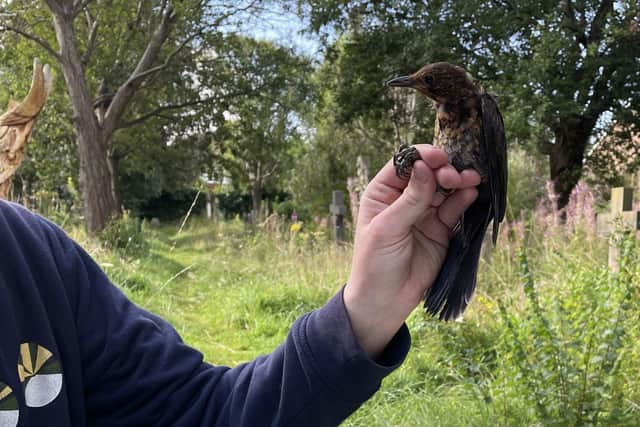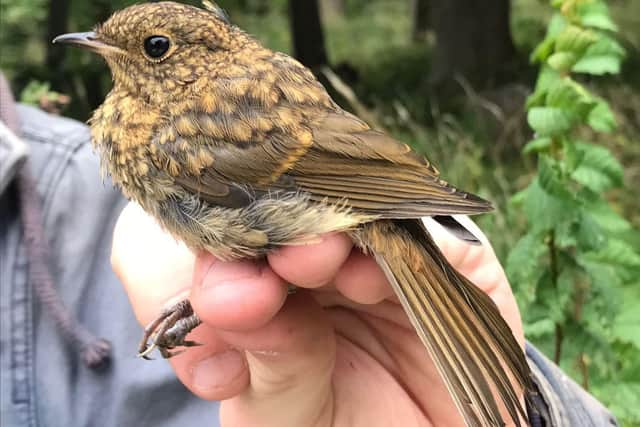Bird ringing: Worthing cemetery plays vital role in bird research for British Trust for Ornithology
and live on Freeview channel 276
The charity says data from ringing plays a major part in the study of bird population changes and to its understanding of species declines.
Bird ringing is unusual in town centres but Heene Cemetery is an ideal location as it is not generally open to the public.
Advertisement
Hide AdAdvertisement
Hide AdRob Tomlinson, Heene Cemetery volunteer, said: “Bird-ringing yields valuable data which, according to the British Trust for Ornithology, says a lot about the survival, productivity and movements of birds.


“The cemetery joined the scheme in spring 2021. A temporary net is used to catch birds and a small metal ring is secured around one of their legs. At the same time, the bird’s species, age, sex, wing length and weight are noted.
“The rings have reference codes to uniquely identify each bird if they are caught again and if that happens, this data can be compared and logged.”
Ringing has been practised since before the First World War and as a result, the theory that swallows over-wintered at the bottom of British ponds was found to be false when a ringed one was recovered in South Africa in December 1912.
Advertisement
Hide AdAdvertisement
Hide Ad

The charity is still discovering new facts about migration routes and wintering areas to this day but the main focus of the ringing scheme is now monitoring bird populations.
Rob said: “During 27 sessions last year, more than 150 birds were ringed in Heene Cemetery. With great care and gentle handling, data about each of these birds was logged and submitted to the BTO.
“Blue tits and great tits were caught most often but an elusive jay, an infrequent redwing and a great spotted woodpecker were also ringed. Tiny wrens and goldcrests were logged, as was a handful of a herring gull. In all, 19 of the 36 bird species that have been seen touching down in the cemetery have been ringed.
“This small bird-ringing venture is one more example of the volunteer citizen science project that is being undertaken in Heene Cemetery. The species count of all flora and fauna currently tops 400 and rises nearly every month. In parallel with this, biographical data on the 2,200 souls buried there is also steadily being uncovered.”
Advertisement
Hide AdAdvertisement
Hide AdFriends of Heene Cemetery are looking for more volunteers for species counts, genealogy, site management and administration. The gates are open on Tuesday and Saturday afternoons, weather permitting. Contact Sue Standing on 07771966846 or visit www.heenecemetery.org.uk for more information.
CLICK HERE to read about a former pilot from Worthing who started an apprenticeship aged 65 to become a bus driver.
